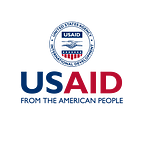Helping to Vaccinate South Africa
Removing barriers to COVID-19 vaccine access
When the COVID-19 pandemic began gaining momentum, Alfred Ncube stepped up to help coordinate the delivery of vaccines to communities in his home country of South Africa. He now oversees five teams who travel around the east coast of South Africa, bringing COVID-19 vaccines to hard-to-reach areas.
“There is a need to go out there and fight the [COVID-19] pandemic, looking at the destruction it has done to people, especially those who are less privileged,” Alfred said.
But supplying COVID-19 vaccines is just one step in the process of stopping a pandemic in its tracks. To increase the number of vaccinated people in a country, it is just as important to analyze and remove barriers preventing people from accessing the vaccine.
With support from the U.S. Government’s Initiative for Global Vaccine Access, or Global VAX, USAID is working with South Africa’s National Department of Health and local implementing partners to ensure equitable access to COVID-19 vaccines across the country.
One major barrier to access is difficulty delivering vaccines to people living in remote locations.
Alfred, who began his career helping public health facilities maintain online connectivity, now uses geographic information systems (GIS) and hotspot mapping to identify where people live, work, and study in the Alfred Nzo district. He uses this data to determine where vaccines are needed. Alfred’s vaccination teams often drive up to four hours daily to ensure COVID-19 vaccinations reach some of South Africa’s most remote communities.
“It will be impossible to have the project without data,” Alfred said. “[The data gathered through GIS and hotspot mapping] shows us the places that are not vaccinated. The statistics drive us to those places.”
Through targeted strategies, USAID is breaking down barriers to vaccine access, increasing the number of South Africans who are vaccinated from 11% to 49% in 10 months. Meanwhile, deaths caused by COVID-19 have fallen dramatically.
Alfred said he’s noticing more and more people feeling safe enough to return to their pre-pandemic daily routines and he credits vaccines for this change in sentiment.
“People are grateful — not grateful to us only, but grateful to USAID for bringing the program to the people and bringing the service to the people,” Alfred said. “At the end of the day when I do this, I feel good. I feel I’ve done my part in society.”
As part of another strategy to vaccinate hard-to-reach communities, USAID works with schools to make COVID-19 vaccines available to children.
Mpunzi Drift Senior Primary School has just 350 students. Despite its rural location on the east coast of South Africa, the peaceful community faced an uncertain future when the COVID-19 pandemic arrived. School Principal Justice Todlwana recalls the concerns and myths that circulated in the community.
“People were anxious about the disease COVID-19,” Justice said. “Some of their relatives were affected, and some lost their relatives. Some lost their breadwinners, and there was chaos in some of the families, so it was a disaster when it came.”
In response, community leaders decided to take a proactive approach and created a Health and Security Committee. Composed of local police, teachers, political leaders, and health workers, the committee works to ensure the community receives correct information on how to protect themselves from COVID-19 and care for each other.
Once COVID-19 vaccines were available, Justice volunteered his school for use as a vaccination site to make access easier for students, educators, and community members — particularly for the elderly and those who cannot afford public transportation to a health facility.
USAID and its partners provide mobile COVID-19 vaccination services to schools throughout South Africa. This strategy is yielding positive results. At Justice’s school, over 95% of eligible students have now been vaccinated and are back to the business of learning.
Schools also serve as crucial community gathering points and facilitate easy access to vaccinations for students’ parents and extended family members.
South Africans like Alfred and Justice are working hand in hand with USAID to remove barriers to vaccine access across the country.
Through targeted strategies like creating mobile COVID-19 vaccination teams, harnessing the power of GIS to map hotspots, and including schools in the vaccination rollout, USAID, the Government of South Africa, and other partners are not just providing vaccines, they are ensuring equitable access to vaccination across South Africa.
About the Authors
Chantelle Van Schalkwyk is the Senior Communications Specialist for the Bilateral Health Office at USAID’s Southern Africa Regional Mission, and Molly McSweyn is the Project Coordinator for USAID’s Development Outreach and Communications Program in the Bureau for Legislative and Public Affairs.
